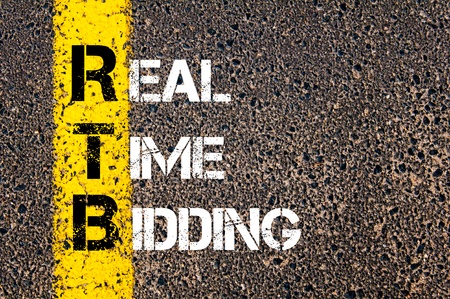In the relatively short history of digital advertising, Search is considered to be the first type of programmatic marketing. At that point, media, and the way it had been executed, changed to become more automated by data-driven systems. Given the success of search and programmatic marketing in general, more channels to automate emerged to make marketing and media buying more efficient. In this article we will take a look at some of the myths surrounding programmatic buying.
Myth: Real-time bidding (RTB) is Programmatic
RTB is actually just one element of the entire programmatic system. RTB can use certain algorithms in choosing whether or not to purchase an ad impression in real time. On the other hand, Programmatic and Programmatic Buying involves building an ecosystem in which the whole planning and buying stage can be automated. It’s important to note that in programmatic trading, media buys take place using either RTB or automated guaranteed buys, which we will expand on in our next article.
Myth: Programmatic buying is just buying leftover inventory (ad space)
While programmatic buying originally involved creating a demand for leftover inventory, things have changed in the marketing landscape. More and more, brands are using programmatic marketing in their campaigns, which leads to publisher’s wanting to make the best inventory available to the programmatic marketplace.
Myth: Nothing is transparent in programmatic
There are also those of us who would argue the opposite were true – that programmatic buying provides complete transparency. In reality, the process of programmatic buying involves multiple components, including margin, media cost, optimization and inventory. Understandably, calls from marketers are mounting for full transparency when using programmatic buying technology, and rightly so! The technology provided should offer transparency at every stage of the process. In terms of inventory, publishers will sometimes modify the URLs at which a campaign was run, at times to prevent channels from conflicting. If you decide to use one of the more premium publishers, it will come down to how much transparency you are being offered and at what price.
Myth: Programmatic buying is simple
“Programmatic is easy” – we’ve heard it a million times before. You simply log onto a platform, set some parameters, and a process-driven algorithm gets to work, right? Wrong. At most, only half of the value is in the technology itself, the rest is up to whoever’s steering the ship. If you were to give wheel to an uneducated marketer in the field of programmatic buying, you can expect the results to suffer. The value and use of programmatic buying will increase as marketers become more aware of the inner-workings of, and strategy behind, programmatic buying and its practical execution.
Myth: Programmatic is about getting the lowest price
Programmatic buying is not about getting the lowest prices. As you’d expect, media buyers tend not to buy impression with higher-than-average CPM, but all this has changed with programmatic buying. Each impression is now more valuable than ever before. As an apprentice to the media-buying circles, you should be asking questions like:
- “Given my goal, how much should I be paying?” and
- “What bid will win me that impression?”
You have to remember that if an impression converts a user at a low Cost Per Acquisition (CPA) and Cost Per Click (CPC), then paying for impressions with high CPMs won’t seem so illogical. This decision takes place literally millions of times for every programmatic second in a programmatic buying campaign.
What next?
Now you understand the myths of programmatic buying, why not check out our digital campaign product kits and booster pages, where you can find more information about creating a holistic digital campaign that is more targeted, more responsive, and more adaptive. Read part 2 »
If you would like to discuss digital media buying with a Bench Media consultant, give us a call on 1300 049 498, or send us an email at [email protected].




